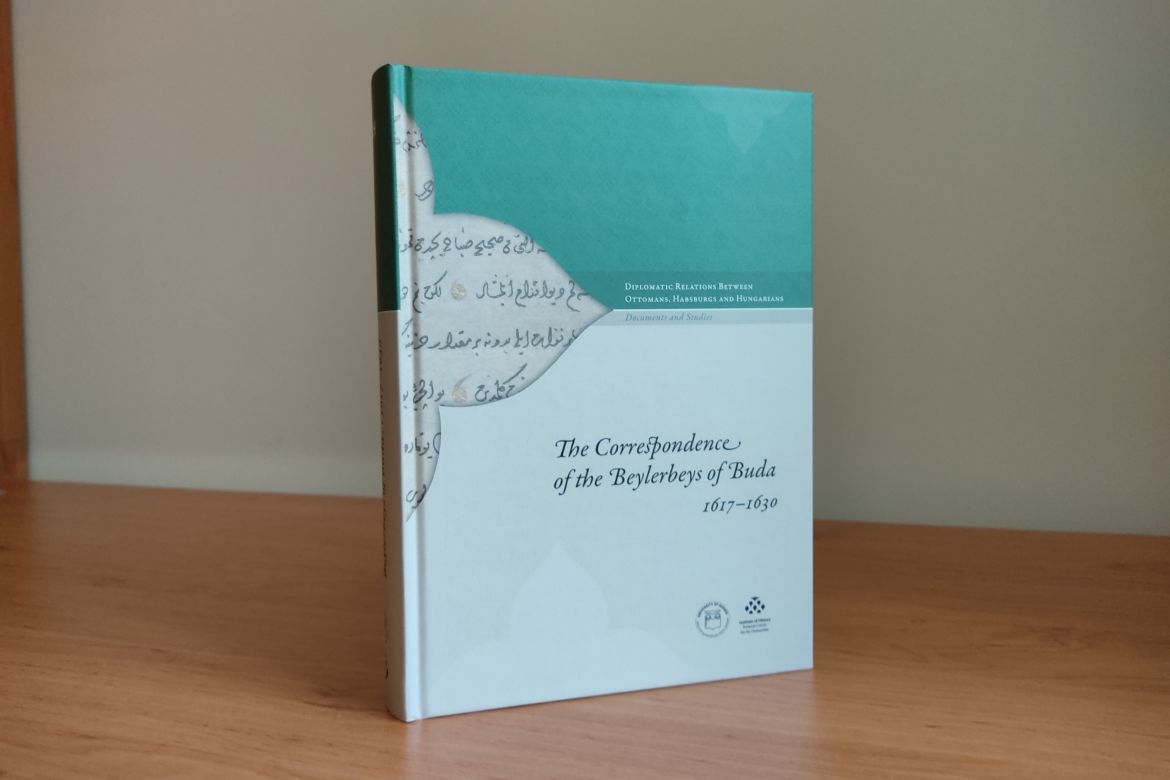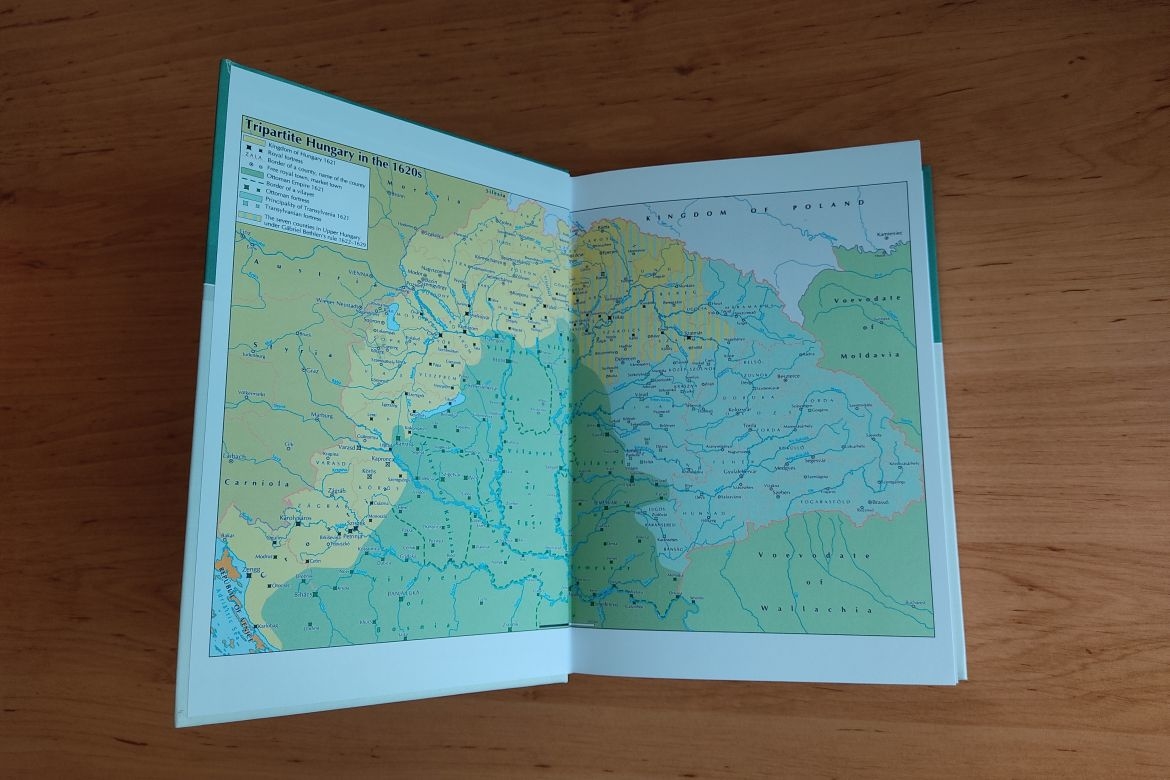The volume The Correspondence of the Beylerbeys of Buda 1617-1630 is published by the Faculty of Humanities and Social Sciences of the University of Szeged and the Research Centre for the Humanities.
This book offers a full edition of the beylerbeys' surviving correspondence from Kadizade Ali Pasha's death till Mürteza Pasha's departure from Buda, including the Ottoman Turkish and Hungarian originals, as well as those letters which are only known in Italian, Latin or German translations. The volume is the result of the work of Mahmut Halef Cevrioğlu, Ilona Dorogi, Miklós Fóti, László Glück, Gellért Ernő Marton and Mónika F. Molnár, coordinated by Gábor Kármán.
As the most important Ottoman office-holders in the European part of the empire, the beylerbeys of Buda played a crucial role in managing the northwestern direction of the sultan's foreign affairs. Beyond their usual task of communicating with the Habsburg court and the high dignitaries of the Kingdom of Hungary, in the 1620s they were also tasked with masterminding the delicate procedure of creating the new peace treaties between the two empires. Due to their cooperation with Gábor Bethlen, prince of Transylvania, they were even involved in some minor actions of the Thirty Years War's first phases.

The Preface, written by Pál Fodor is available here
The fate of Central Europe in the sixteenth and seventeenth centuries was determined by several centres of power: Vienna, Istanbul, Madrid, Rome, Venice, Paris and London. Among these, the Ottoman Turkish state, which occupied a third of Hungary and was constantly expanding, was the strongest and most threatening power in the region. The European powers therefore tried to maintain constant diplomatic contact with it throughout the sixteenth and seventeenth centuries in order to learn its intentions and to prepare for its possible attacks in good time or even to cooperate with it. Therefore, diplomatic reports and newsletters prepared by ambassadors and resident envoys in Istanbul, and the correspondence of Ottoman governor-generals in Hungary with Habsburg kings, Transylvanian princes and politicians of both countries are the most important sources of contemporary great power politics, as well as of Ottoman domestic affairs.
Hungarian historians were among the first to recognise the outstanding importance of these documents. Antal Gévay began to explore and publish the Habsburg source material in Vienna in the mid-nineteenth century, but his source edition series was interrupted around the events surrounding the occupation of Buda (1541). The collection of documents by Pál Török, who continued and supplemented Gévay’s work, has remained in torso and unpublished to this day. The last large-scale diplomatic source material – the reports of Antal Verancsics (Antun Vrančić) as ambassador to the Sublime Porte – were also published in the nineteenth century. In the meantime, historians from other countries concerned had also begun to work on diplomatic records concerning their own states. This is how the papers of the Venetian and English ambassadors were published in series of source editions. In the 1990s, a group of researchers in Munich decided to continue Gévay’s work and published a bulky volume containing reports written by King Ferdinand I’s envoys (up to 1552). Unfortunately, however, this programme also fizzled out. The venture to publish the surviving correspondence of the Ottoman governor-generals of Buda faced a similar fate. In conclusion, it is precisely the most important relationship for early modern Ottomans, their contacts with the Habsburgs, for which the least resources are available.

Seeing this shortcoming, the idea to change this situation was born in several researchers at the beginning of the twenty-first century, at the same time, but independently of each other. First (in the late 1990s), a research group led by István Hiller was formed at the Faculty of Humanities of Eötvös Loránd University (Budapest) with the aim of publishing the reports of Johann Rudolf Schmid, the Habsburg envoy in Constantinople between 1629 and 1643. In 2008, a research group was set up at the Institute of History of the Hungarian Academy of Sciences, at the initiative of Pál Fodor and István Fazekas, to publish the Habsburg–Ottoman diplomatic documents of the period 1568–1593. Currently, this project, which also aims at publishing the letters of the seventeenth-century pashas of Buda, is managed by Gábor Kármán. At the same time, the Ottomanists of the University of Szeged, led by Sándor Papp, started to work on the diplomatic papers of Simon Reniger von Reningen, Habsburg envoy to Constantinople (1649–1665), and later on the critical edition of the Ottoman–Hungarian and Ottoman–Habsburg peace treaties. In 2018 and 2020, two similar projects were launched in Austria, at the University of Salzburg and at the Institute for Habsburg and Balkan Studies at the Austrian Academy of Sciences, under the direction of Arno Strohmeyer, to produce a digital critical edition of sources of Habsburg–Ottoman diplomatic contacts.
Now a part of the planned work has been completed, the heads of the different projects have decided to coordinate their publication activities. For the purpose of traditional (non-digital) publishing, the Research Centre for the Humanities at the Eötvös Loránd Research Network and the Faculty of Humanities of the University of Szeged have founded a joint book series entitled “Diplomatic Relations between Ottomans, Habsburgs and Hungarians. Documents and Studies”.
In the series, they will primarily publish collections of documents, but will occasionally also include monographs on the subject. In bringing out the first volume, I cannot but wish that this series will not suffer the same fate as the previous ones, and that it will continue to fulfil its intended role for a long time to come: to shed light on the role of the Central European region in the global history of the sixteenth and seventeenth centuries.
Pál Fodor
The volume is available for purchase abroad in Europe for 40 EUR, outside Europe for 60 EUR (including shipping costs). Place your orders at


